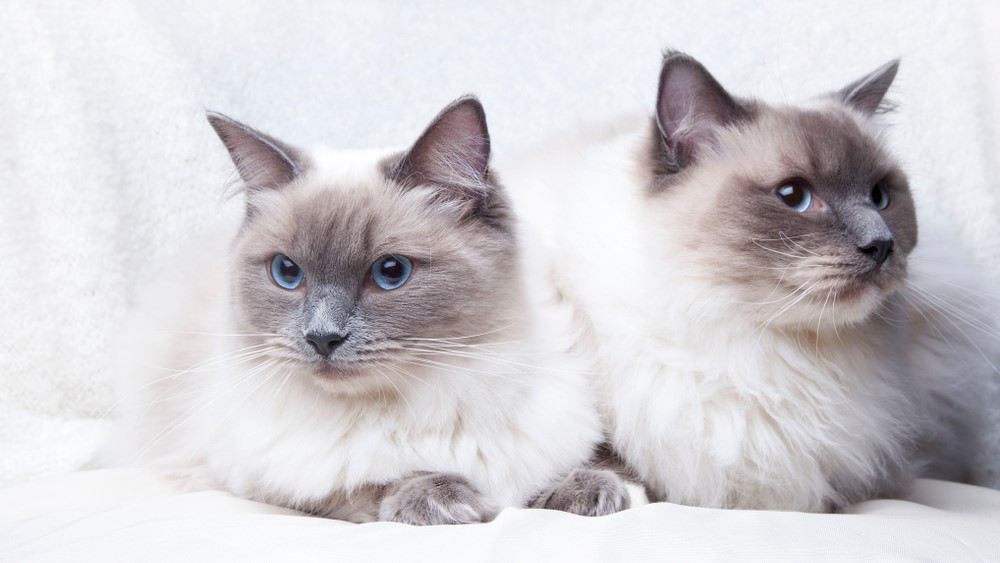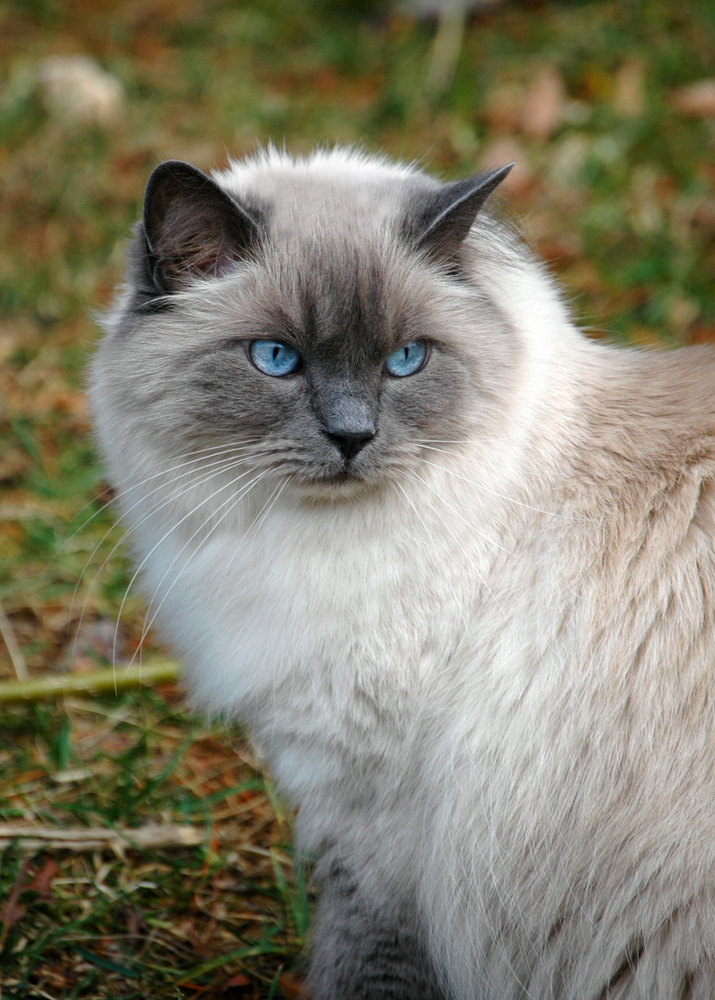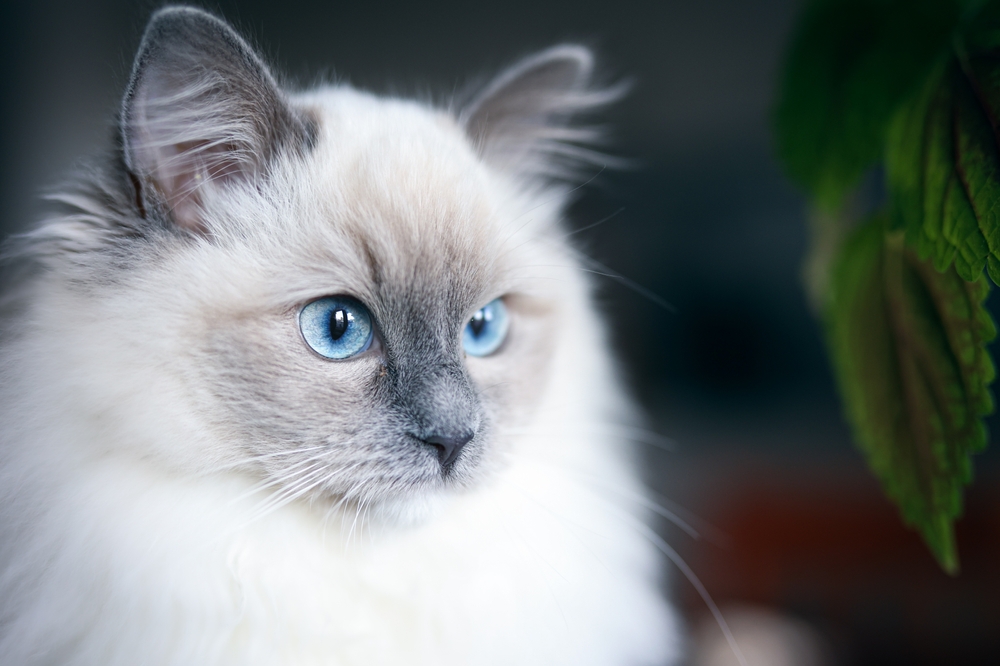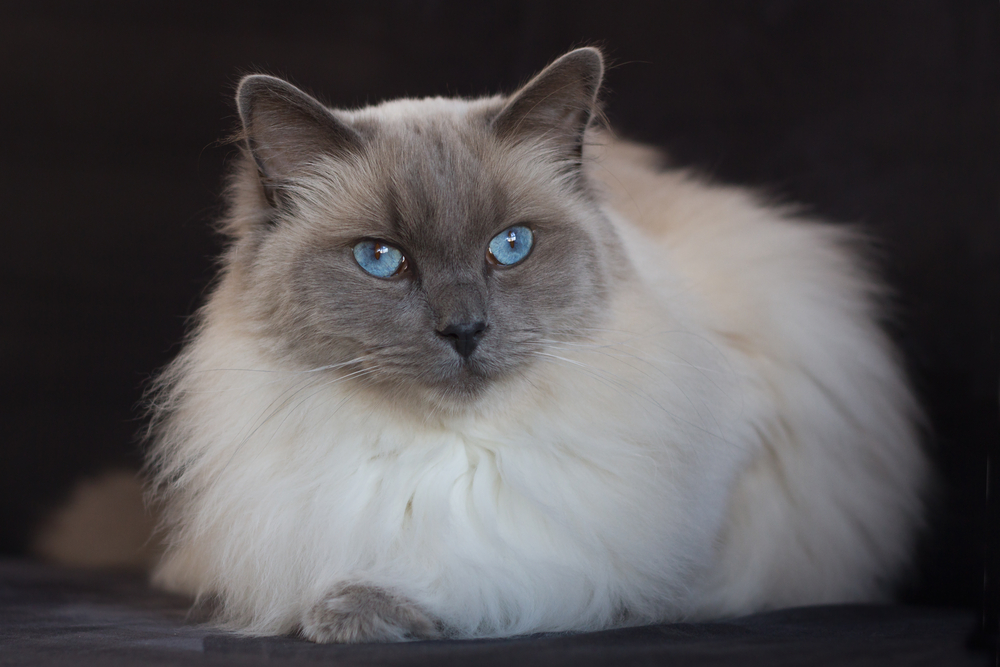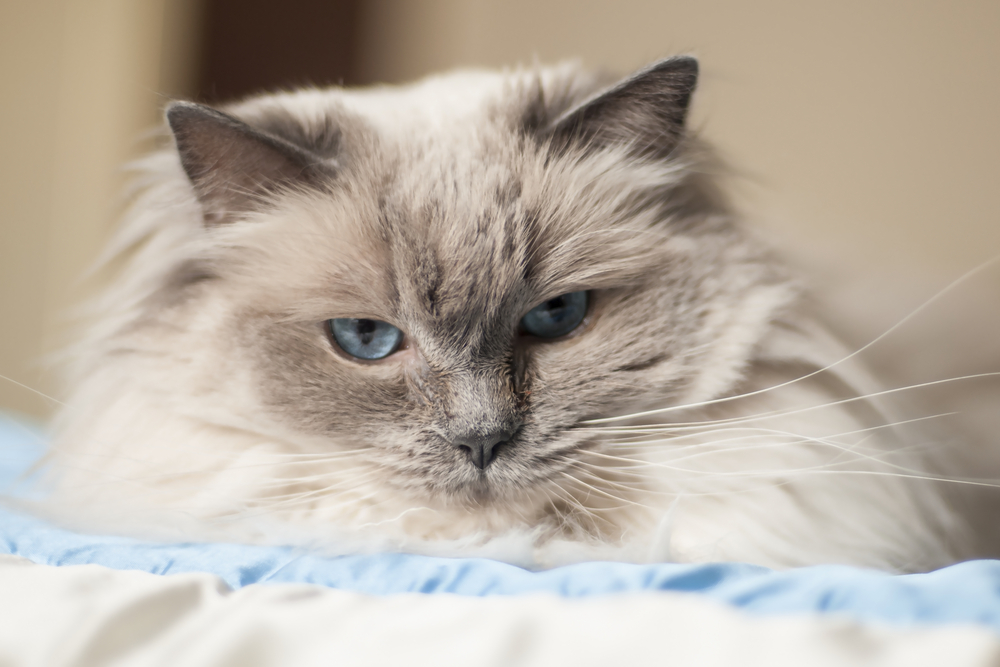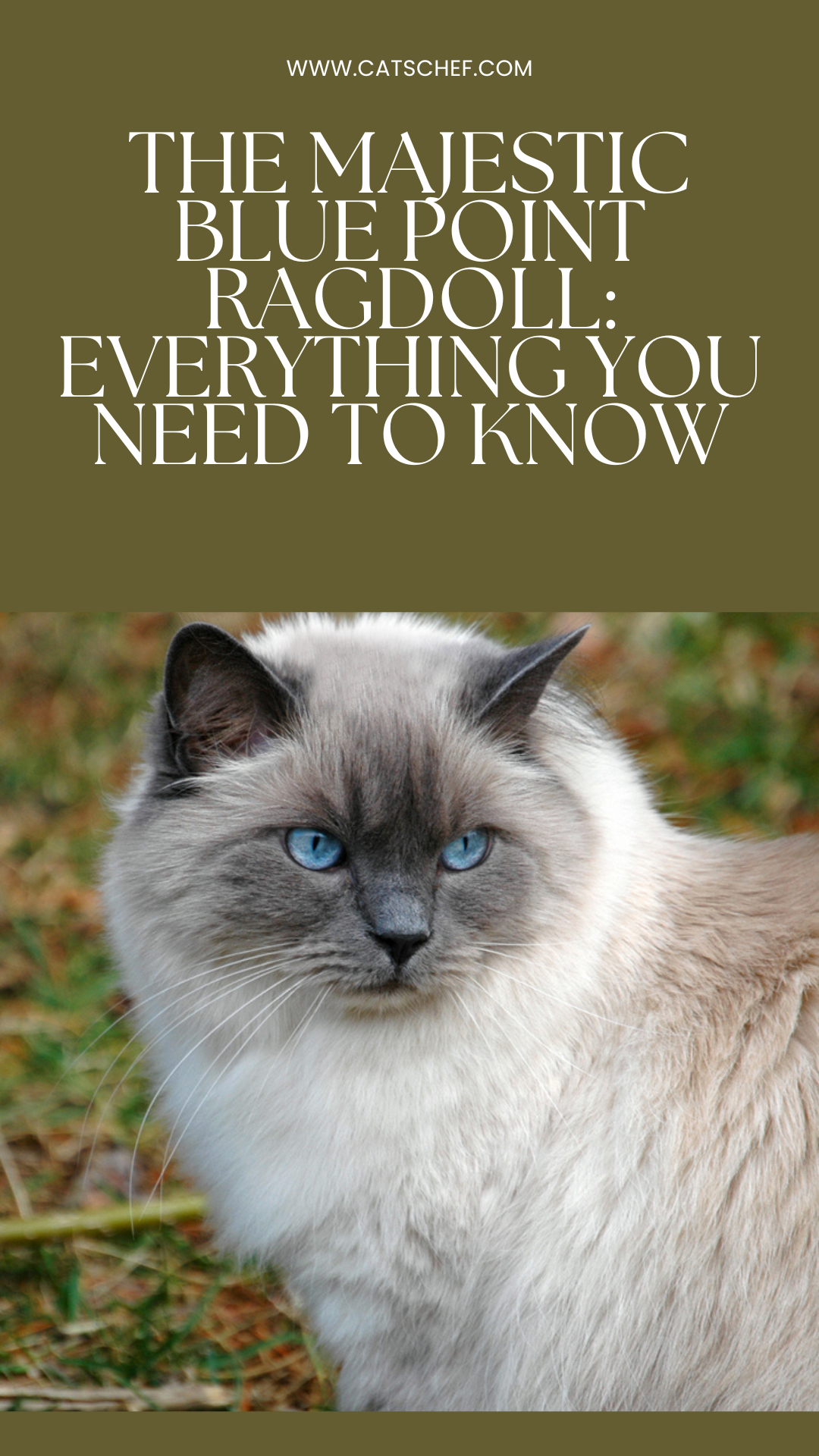📖 Table of Content:
You’ve probably seen the majestic blue point Ragdoll somewhere and you couldn’t stop thinking about having one ever since. These beautiful kitties have that effect on people. While they’re a relatively new breed, they’re getting quite popular in the feline world.
That comes as no surprise. They have a unique, eye-catching look and a wonderful personality that hardly anyone could resist. If you’re looking for a friendly, loving, and affectionate kitty that will spend most of her time with you, you’ll absolutely love this breed.
However, it would be a terrible mistake to adopt a cat based solely on her looks. In order to provide her with the best possible life, you need to know about her needs, personality traits, and possible health issues.
Unfortunately, shelters are full of cats who were separated from their families simply because they didn’t know how to take care of their fur friends properly. Since you’re here reading about the breed you’re interested in, I’m sure you’ll give your fluff the furrever home she deserves.
Together, we’ll learn the blue point Ragdoll basics – their looks, personality, requirements, and potential health issues. Let’s get started!
What’s a blue point Ragdoll?
So, who is a blue point Ragdoll? In essence, they’re Ragdolls with unique gray coloration and patterns. These beautiful fluffs are often associated with blue shades, hence the name. In the last couple of years, they’ve become one of the most popular Ragdolls, and no one’s surprised.
Despite their name, their fur isn’t always blue. It can be lilac, flame, chocolate, or creamy, and all of them are recognized by The International Cat Association (TICA). Don’t worry, it’s normal if your Ragdoll fluff is born white – most of them are!
Different patterns of blue point Ragdolls
The color and pattern of your blue point Ragdoll will depend on a number of factors, the main ones being genetics and your fluff’s anatomy.
The Cat Fanciers Association (CFA) approved several types of blue point Ragdolls. Depending on the genes they inherit from their parents, these kitties can be blue bicolor, blue mitted, blue lynx, and blue tortie Ragdolls. Let’s learn more about these unique fluffs.
1. Blue point Ragdoll
The most common one is the one you’re reading about today – blue point Ragdoll. They’re proud owners of a coat that’s slightly blue and mostly white, with their faces generally being gray. They have a natural, soft fade from gray to a creamy white around their undersides and chest.
Common for all color point kitties, blue Ragdolls also have paws and a nose that match their points. Could they get any more adorable?!
2. Blue bicolor Ragdoll
The beautiful blue bicolor Ragdolls are known for having an inverted V on their cute little faces. These beautiful felines are known for having two colors on their faces which can, most of the time, be found on each side of their faces.
You think that’s cute? Wait until you hear about their cute pink nose! It’s just begging for boops and kisses…
Most of the time, their chest and undersides are bright white, with the rest of their bodies being a different color. Some kitties are even blessed with slight coloration along their legs, too!
3. Blue mitted Ragdoll
Blue mitted Ragdolls are often mistaken for blue point Ragdoll felines due to their looks. Their main difference, however, is that mitted fluffs have a white patch on their chins, with white paws. Yes, they look like they’re wearing mittens, which is how they got their name… How adorable is that!?
The rest of their fur, however, is blueish-white. Some of them also have a white stripe on their faces, which leads to their adorable noses. Just like was the case with their blue point Ragdoll besties, their paw pads also match the color of their point patterns.
4. Blue lynx Ragdoll
Blue lynx Ragdolls have that adorable M shape on their faces and iconic tabby markings all over their adorable bodies. Just like all Ragdoll felines, blue lynxes also have breathtaking blue eyes. They come in a variety of shades, depending on their genetics and individual anatomy.
Some can have dark legs, while some of them are blessed with adorable white paws and chins that make them look like their mitted Ragdoll cousins. Hardly anyone could resist their adorable pink noses and white eyeliners. They look like real divas!
Because of their unique looks, lynx Ragdolls are quite rare in this fluffy community.
5. Blue tortie Ragdoll
If this name makes you think of a tortoise, you’re not wrong! These beautiful kitties are named torties due to their tortoiseshell patterns. One of their unique features is their adorable face, which usually has three different colors. The most common ones are gray, red, cream, or black!
Their fluffy bodies are usually creamy white, while their fur becomes slightly darker as it comes closer to their face, paws, and ears. Fun fact: the tortie pattern can be found in female Ragdolls only!
Get ready to always be tempted to kiss their pink noses and coral paw beans! Luckily, our Ragdoll besties are pretty affectionate, so she’ll probably love all the kisses and cuddles she gets.
Blue point Ragdoll: Personality
When it comes to the personality of your blue point Ragdoll, you’re in luck! These wonderful felines are known as one of the sweetest furbabies you can get, and they’re a great choice for first-time cat parents. They’re kind, sociable, and pretty chill. Some say it’s almost like having a dog!
That’s mainly because, most of the time, they’re friendlier than any other cat breed. Not only are they super affectionate, but they absolutely love spending some quality time with their favorite humans. They love affection and even being held like babies. In fact, that’s how they got their names!
They absolutely enjoy being held. The name Ragdoll comes from their habit of going limp like a ragdoll every time you pick them up! Your cuddle buddy is super patient, and she might even let your kids play dress up with her or even push her around in her toy stroller.
If it means spending time with the people she loves, she’ll do everything to make them happy. As I said, she’s pretty relaxed and chill, and not a lot of things get on her nerves. Blue point Ragdoll is a perfect addition to a family with kids or other pets.
They bond with their families pretty quickly and, once they do, they show nothing but love and devotion for their favorite humans.
Blue point Ragdoll: Exercise, care, and training
Blue point Ragdolls are highly intelligent and they understand things pretty quickly. If you plan on training your fluff, you’ll have absolutely no issues there. Begin as early as possible in order to teach her the basics such as using her litter box.
You’ll quickly learn just how smart this breed is. In fact, you’ll be able to teach her some tricks, too! I’ve seen blue point Ragdolls do hi-fives, play fetch, and even wave to their owners. It really is like having a puppy!
When it comes to exercising, don’t stress about it too much. They have pretty relaxed personalities, so they don’t have to exercise regularly. Playing with them indoors and using their favorite toys should be just enough to keep them in good shape.
When it comes to grooming and care, they’re not too difficult in this area, either. Although they have relatively long fur, they don’t have an undercoat, which means they won’t shed as much, either. Still, they require regular brushing to avoid knots and mats.
That way, you’ll reduce the shedding to a minimum, and avoid any possible skin conditions that are common with long-haired kitties. Brush her teeth regularly and trim her nails twice a month. A diva deserves diva treatment!
Blue point Ragdoll: Health
Unfortunately, blue point Ragdolls aren’t the healthiest kitties you can have. These three health conditions are the most common among Ragdolls: bladder stones, obesity, and hypertrophic cardiomyopathy.
Bladder stones can be extremely uncomfortable and painful, yet they’re pretty common with this breed. The best way you can help your fluff avoid this condition is by encouraging her to drink plenty of water.
On top of that, you should regularly take her to the vet so that they can monitor her health and detect any possible health issues on time. If your cat isn’t a huge fan of drinking water, try introducing her to a water fountain. Most of the time, cats prefer running water over the water they can find in their bowls.
Because they’re big in size and quite lazy, blue point Ragdolls are also prone to obesity. They easily gain weight if you don’t help them maintain a healthy diet. In case your fluff eats more food than her body needs, she’s at risk of developing diabetes.
Finally, Ragdolls are prone to heart issues. The most common condition these felines suffer from is Hypertrophic Cardiomyopathy, which causes the muscles in their heart to thicken.
Despite these potential health issues, your blue point Ragdoll will keep you company for about 12 to 16 years.
Read more: Flame Point Ragdoll: She’s On Fire And She Knows It
